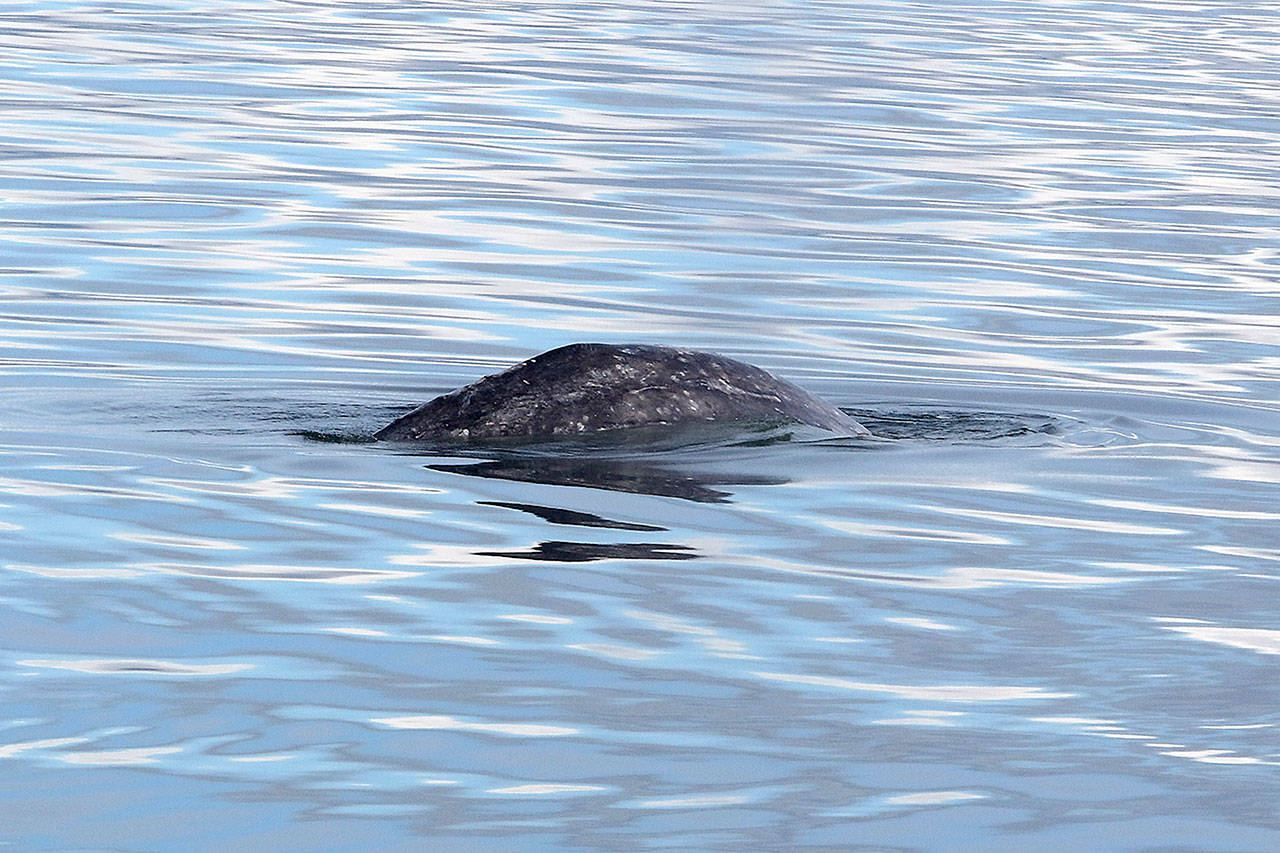The fate of gray whale struck by a powerboat in Saratoga Passage this weekend remains a bit of mystery, though experts are hopeful it will live to swim another day.
State investigators and biologists spent much of Monday searching the area and did observe a whale with an injury consistent with a boat strike. Based on a limited visual examination, the whale appeared, and sounded, to be doing alright, said Lesanna Lahner, executive director of SR3, a Mukilteo-based seal life response, rehab and research group. Though it could take weeks to know for sure.
“Flippers crossed, this guy is going to be OK,” she said.
Lahner emphasized that it’s uncertain that this was the whale struck. The injury, a lesion about the size of a basketball, was visible on the whale’s left side. There’s no way to be sure it was caused by a ship strike, she said.
John Calambokidis, a research biologist, and founder at Olympia-based Cascadia research, examined photos taken of the whale and others agreed it’s too soon to know for sure.
“There could be a number of things going on there,” he said.
He’s been studying gray whales in the area since 1990. He believes the answers will come, but that they won’t be revealed for days or weeks, either with the discovery of a clear and obvious ship-strike injury or changes in behavior within the group.
The incident occurred Sunday between Hat Island and South Whidbey. A group of commercial whale watching boats had stopped to observe three grays — whales 49 (Patch), 383 and 22 — when a private pleasure craft approached and slowed to a stop. When the occupants didn’t see anything, the vessel resumed its course between the two larger tour boats.
It was just passing between them when a gray whale appeared to surface and the collision occurred. Video taken by passengers showed the approximately 23-foot power boat visibly ride up and over the semi-submerged whale.
“It looked like a pretty hard strike, but these are pretty thick-skinned animals,” said Sgt. Russ Mullins with the state Department of Fish and Wildlife. “Hopefully it doesn’t amount to anything more than a bruise but we don’t know; that’s why we’re monitoring.”
The owner of the boat, a trailerable Bayliner, was contacted and is cooperating with the department’s investigation, Mullin said. The case will try to determine whether a violation of the federal Marine Mammal Protection Act occurred.
The act prohibits people or boaters from being within 100 yards of a gray whale.
Mullin said the vessel’s skipper didn’t break any rules of the road, but may have acted with negligence.
“They certainly didn’t operate at a prudent speed while whales were in the water,” he said.
Once the state’s investigation concludes, any charges would be brought forward by the National Oceanic and Atmospheric Administration.
According to Susan Berta, a founder of Whidbey-based Orca Network, the area where the accident occurred is frequented by gray whales. This event and others are a good reminder for boaters to slow down while traveling between Whidbey and Hat Island.
Gray whales are in the area to feed and rest, so may not always be watching for marine traffic, which means it’s up to boaters to look for whale signs and take appropriate action.
“They [whales] don’t always follow the guidelines,” she laughed.
For tips on what boaters should look for and how to practice safe operation in whale heavy areas, visit www.bewhalewise.org.



